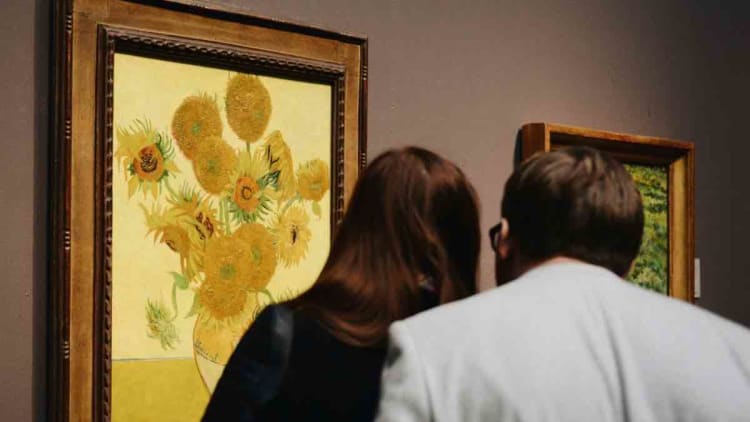Art is not only an expression of creativity, culture and thought, it is also an emotional and financial investment. For many families, owning a work of art is much more than simply acquiring an object. It represents a part of their history, a symbol of their heritage and sometimes a source of wealth transmitted from generation to generation.
But how do these artworks become true family heirlooms? And what are the best ways to manage, transmit and enhance an art collection over time? Art Shortlist has decided to explore for you these crucial aspects of art as heritage.

Art as an expression of family heritage
To own a work of art is to own a piece of history. Each piece of art can have a special meaning for a family. It may be an acquisition marking a key moment, a link with an important artist or artistic movement, or a work passed down by a parent or ancestor, creating a unique intergenerational bond.
Artistic heritage is distinguished by its ability to evoke strong emotions and personal memories. A work of art displayed in a family home often becomes the silent witness of many life events. Over time, it gains in symbolism and sentimental value, transcending its status as a collector's item to become a genuine part of the family identity.
Managing a family art collection
Managing an art collection is a complex undertaking, requiring care and expertise. Unlike other types of property, works of art are sensitive to conservation conditions (light, humidity, etc.) and their value can fluctuate according to market trends, state of conservation and the artist's reputation.
It is essential for families to surround themselves with competent professionals: curators, restorers, specialized insurers and art advisors. A regular audit of the collection enables us to check the condition of each piece and reassess its value. Documenting each work, with information on its provenance, exhibition history and certificates of authenticity, is also crucial to ensure rigorous management.
Specialized art insurance is also essential. They protect against the risks of theft, fire or accidental damage, offering the peace of mind needed to preserve these family treasures.
Read more: Why provenance is essential when buying a work of art?
Passing on a collection: preparing the future for generations to come
Passing on an art collection to the next generation is a decision often fraught with emotion and responsibility. To avoid conflicts and unpleasant surprises, it is advisable to anticipate and plan this transmission carefully. There are several options available to families: bequests in a will, shared gifts, or the integration of certain works into a family foundation or trust.

Above all, it is essential to make heirs aware of the historical, cultural and financial value of the works. An informed heir will be better able to appreciate and manage the artistic heritage he receives. Some families also choose to draw up a document explaining the importance of the collection, its origins, and the reasons for its acquisition, to guide future generations in preserving this heritage.
Works of art often benefit from favorable tax treatment. In France, for example, works of art are not subject to the property wealth tax, which can make them particularly attractive as a transferable asset. However, inheritance and gift taxes can be complex, particularly when works are valued at large sums. It is therefore advisable to consult a specialized tax advisor to optimize the transfer.
Also read: How can art be a safe haven in times of economic crisis?
Valuing an art collection through the generations
In addition to preservation and transmission, it is important to enhance the value of the collection so that it continues to grow in importance and value. Some works naturally increase in value over time, depending on the artist's reputation or their rarity. But it is also possible to actively enhance a collection through exhibitions, publications or even loans to museums.
These initiatives not only increase the collection's visibility, but also enhance its prestige. A work exhibited in a renowned museum or included in a major retrospective takes on an extra dimension, which can positively influence its valuation at a future sale, or simply give it a special place in the family estate.
Families can also consider enlisting the help of art investment experts or art advisors, who can identify market opportunities and help the collection evolve strategically. It's not just a question of acquiring works, but of choosing them wisely, taking into account their long-term potential.
In conclusion
Works of art, when well preserved and passed on with care, become much more than mere objects: they embody the living heritage of a family, rich in its history, tastes and cultural commitments. Each generation contributes to nurturing this collection, making it grow and protecting it for those who come after.
While the acquisition of a work of art is often a personal act, its management and transmission are part of a collective process that involves the whole family. With the right advice and careful planning, an art collection can survive the centuries, becoming both a tangible and intangible legacy for future generations.




